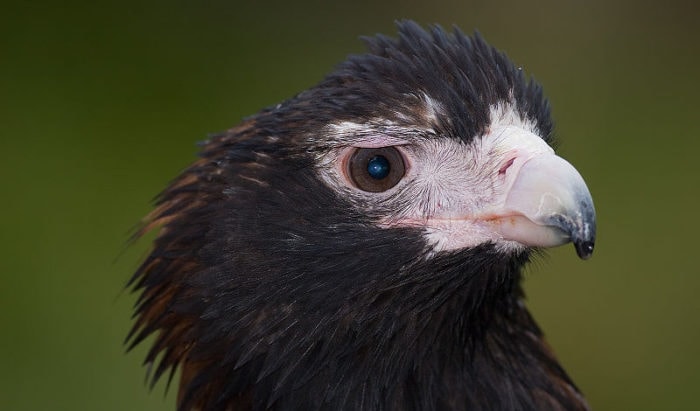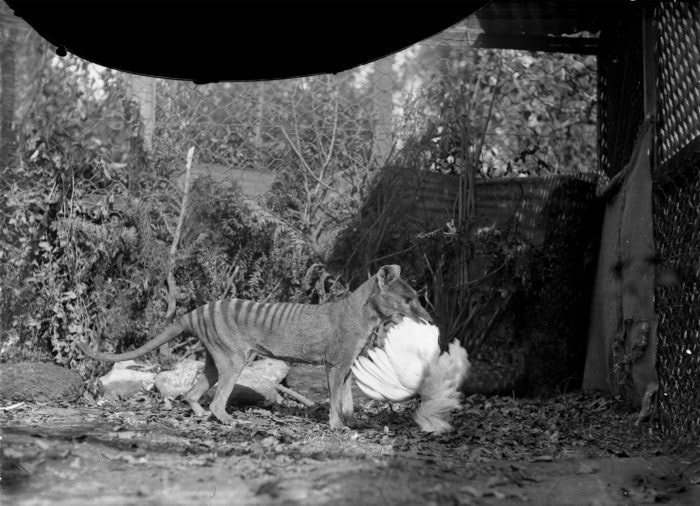Iconic Australian animals that once had a bounty on them

THE EXTINCTION OF the thylacine on 7 September 1936 – and whether or not humans contributed to this extinction – is hotly debated among scientists.
Research published in 2013, however, was relatively conclusive. According to the paper, the impact of the government bounty had one of the largest influences on thylacine numbers, with experts agreeing it would have been sufficient to eliminate the population.
This type of government-incentivised hunting was common in the first century of European settlement. “Most new settlers didn’t really value Australian wildlife, they were just seen as pests to whatever commodity those settlers were trying to cultivate,” said conservation biologist John Woinarski from Charles Darwin University.
“It was all about short term benefit and profit. I’m sure that most people didn’t think that a bounty on thylacines would result in their extinction, and even if they did, I don’t think that would have been an undesirable outcome for them.”
Thylacines weren’t the only animals with a bounty on their carcass. In 1877, the Queensland Government went as far as enacting the Marsupial Destruction Act, which experts estimate killed up to 27 million kangaroos, wallaroos, bandicoots and other marsupials — hunters were paid handsomely for scalps as proof.
Here, we explore the controversial history of bounties on Australian animals.
1. Wedge-tailed eagle
Bounty: Five shillings per head from 1940 to 1942 (Western Australia)
Prior to the 1970s, bounties were collected for the dead carcasses of wedge-tailed eagles in most Australian states. Today, the eagles are protected under respective state laws, with penalties of up to $8000 in fines and imprisonment for their persecution. Only the Tasmanian population of wedge-tailed eagles are protected under the EPBC Act, the Commonwealth law.
Ornithologists argue that the wedge-tailed eagle could be the most persecuted eagle in the world. While the bounty was in place, BirdLife Australia estimates that 147,237 were killed in Western Australia between 1928 and 1968 and 162,430 in Queensland between 1951 and 1966. After receiving protections, their populations steadily recovered.
The misconception that wedge-tailed eagles are a threat to livestock was the justification for their destruction by farmers and is still used today. In June of this year, over 100 wedge-tailed eagles had been found poisoned on a farm in eastern Victoria, which eagle experts argued was proof the myth has endured.

(Image credit: Wikimedia)
2. Tasmanian devil
Bounty: Two shillings and sixpence for males and three shillings and sixpence for females from 1830 to 1941
The Tasmanian devil, like the thylacine, was despised by European settlers because of the alleged threat it posed to livestock, mainly chickens. In 1830, the Van Diemen’s Land Company, a farming corporation that still operates today, placed a bounty on the devils, as well as thylacines and wild dogs.
According to Parks and Wildlife Service Tasmania, the devils were trapped and poisoned for well over a century. They became a protected species in 1941. The Examiner, a Tasmanian newspaper, reported that this was because they’d practically disappeared from the settled areas.
When this decision was made by the Fauna Board, the Minister for Lands and Works, Major Davies, resigned, disagreeing that the animals should be protected. “The devil destroys game; the rats are destructive; the wombat damages fences and most of these animals can protect themselves,” he reportedly said.
Populations of Tasmanian devils steadily increased following the protections, but declined once again because of a facial tumour disease that emerged in the 1990s. The disease has caused some populations to crash by up to 90 per cent.
3. Wombat
Bounty: One dollar per head 1926 to 1966 (Victoria)
Australia is home to three species of wombat, the southern and northern hairy-nosed wombats and the common wombat, all considered vermin until the late-20th century. The bounty system put in place in Victoria in 1926 was particularly brutal.They were trapped, poisoned, shot and scalped by hunters, who were paid a dollar per head.
Wombats were despised by farmers because they often damaged fences and other types of farming infrastructure, and cattle often break their legs when wombat burrows collapse beneath them. The bounty in Victoria was removed as late as 1966, yet despite this, wombats still aren’t free from persecution by farmers. They were still classified as vermin in some parts of the state under the Victorian Wildlife Act until 1984.
The conservation status of the common wombat is considered ‘least concern’, however the southern hairy-nosed wombat is near threatened, and the northern hairy-nosed wombat, critically endangered. Advocates argue that without stronger protection laws, southern hairy-nosed wombats risk becoming extinct within the next 15 years.
4. Thylacine
Bounty: One pound per head and ten shillings for sub-adults from 1888 to 1909 (Tasmanian Government)
By far the most famous case of a bounty leading to extinction is that of the thylacine. These carnivorous marsupials were considered pests by farmers and a bounty scheme was introduced in 1830, again, by the Van Diemen’s Land Company. The Tasmanian Government issued another bounty on their head in 1888. The bounty was removed in 1909, but by then it was too late, the species was on the brink of extinction.
The last thylacine, named Benjamin, died on 7 September 1936 in Hobart Zoo, just two months after the animal had finally gained full protections under Tasmanian law. Some believe, however, that the thylacine may have existed in the wild until the 1940s. A slew of alleged thylacine sightings have occurred since the species went extinct but none have been proven.
Prior to their extinction, a myth prevailed that the thylacine was a threat to livestock. One of the most peculiar cases was an image that surfaced in the 1920s of a thylacine with a chicken in its mouth, which experts now believe was in fact a staged photo with a taxidermy thylacine. They also believe the image was responsible for a blossoming of the idea that the thylacine was a sheep and poultry predator. Overall, experts agree that the threat posed by thylacines to livestock was exaggerated.

(Image credit: Harry Burrell)
5. Koala
Back in 1927, the Queensland Government declared open season on the state’s koala populations, which resulted in the killing of an estimated 800,000 koalas, 600,000 of which were killed for their pelts. Although hunters weren’t paid a bounty, the cull was in response to an alleged boom in the number of koalas and became known as ‘Black August.’
The animal fur was used for the textile industry in the United States and Europe. According to research by the Australian Koala Foundation, between 1888 and 1927 at least 8 million koalas were killed for the fur trade, leading the foundation to believe that the koala fur trade completely decimated wild populations.
The foundation said that the open season in Queensland ended after major public backlash, led by Brisbane’s Anglican Archbishop Gerald Sharp. The import of koala fur to the United States was eventually banned. NSW, VIC and SA banned open season on koalas in the early 1900s. Despite this progress, conservationists argue that the effects of the open season are still being felt today. Koalas are currently listed as vulnerable in Queensland.




